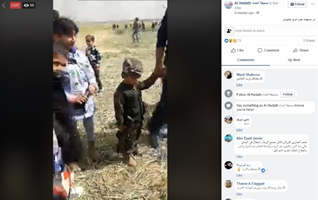JPost Editorial: Lessons not learned
Commemorating the genocide of European Jewry as we will on Holocaust Remembrance Day – which begins Wednesday night and continues through Thursday – is not just a show of respect for those lost. Actively remembering the past should also have relevance for us today.How a small pogrom in Russia changed the course of history
Yet looking around the world, we can easily reach the conclusion that the lessons of the Holocaust have not been learned.
An annual Anti-Defamation League report surveying antisemitic incidents in the US in 2017 released in February found the number of antisemitic incidents was nearly 60% higher than in 2016 – the largest single-year increase on record. There were 1,986 incidents, including 1,015 cases of harassment, 952 of vandalism and 19 physical assaults.
Europe, meanwhile, has become an inhospitable place for Jews. A recent survey by the World Zionist Organization conducted before International Holocaust Remembrance Day on January 27, found that half of European Jews said they do not feel safe being in public using a Jewish name, or seen with Jewish symbols such as a kippa or Star of David.
And it is not just a subjective feeling.
Last month, Mireille Knoll, an 85-year-old Holocaust survivor, was hacked to death and burned in her home, evidently by a young male Muslim neighbor. France’s President Emmanuel Macron said that Knoll was murdered “because she was Jewish.”
Other incidents include the murder last of year of Sarah Halimi, 65, by Kobili Traore, who reportedly shouted “allahu akbar” as he carried out the murder.
Sarah Halimi apparently is a distant relative of Ilan Halimi, the French-born Jew who was kidnapped and murdered in 2006 by a gang of Muslims. Four Jewish hostages were murdered in the Hyper Cacher kosher supermarket in Paris two days after the Charlie Hebdo massacre.
In Germany, police recorded 1,453 antisemitic incidents in 2017.
The Kishinev pogrom’s impact was fueled, in part, by photographs of the atrocities that made it around the world. One image of 45 murdered victims laid out in prayer shawls was particularly resonant, appearing in numerous broadsheets during the early days of news photography.
“It was a little bit like how that [photo of Alan Kurdi, a dead] Syrian child on the beach concretized Syrian misery,” said Zipperstein, referring to how a captivating image can break through the “abstraction” behind human catastrophes.
Although the pogrom did not sway many American Jews toward Zionism, there was a decided shift to the political left. It was generally (and erroneously) assumed the pogrom had been organized by Russian officials, prompting many Jews to become suspicious of conservative government. In 1905, the Russian Empire’s formation did, in fact, lead to a wave of state-sanctioned, anti-Semitic violence. As many as 200,000 Jews were murdered in an estimated 600 massacres, including an additional 19 victims in Kishinev.
In the US, it was not only Jews who drew conclusions from Kishinev. Black leaders spoke about the “twin evils” of European pogroms and lynchings in the American south, where thousands of blacks were murdered in a decades-long campaign of racial terrorism. In 1909, the National Association for the Advancement of Colored People (NAACP) was formed to combat this violence, and Kishinev was mentioned in the group’s founding documents.
The Jews’ enemies, too, drew conclusions from the pogrom, realizing that mass media could be used to incite large-scale violence. One of Kishinev’s chief instigators, the publisher Pavel Krushevan, pushed out the anti-Semitic forgery, “The Protocols of the Elders of Zion,” in the months following the pogrom. The notorious canard made it into the hands of anti-Semites including Henry Ford, who published half a million copies in the US.
According to some Jewish leaders, “every aspect of the Holocaust had been anticipated by the Kishinev pogrom.” From the role of intellectuals in galvanizing anti-Semitism, to the blaming of Jews for defending themselves, the pogrom helped solidify a template that culminated in the murder of six million Jews during World War II. This modernization of anti-Semitism was not lost on Jewish thinkers, some of whom predicted Nazi Germany’s “Final Solution” with eerie precision.
“When I was in America, I did not believe in the Jewish question removed from the whole social question,” wrote Emma Goldman after being deported to Russia by the US government in 1919. “But since we visited some of the pogrom regions I have come to see that there is a Jewish question, especially in the Ukraine,” she wrote.
“It is almost certain that the entire Jewish race will be wiped out should many more changes take place,” wrote Goldman.









































.jpg)

